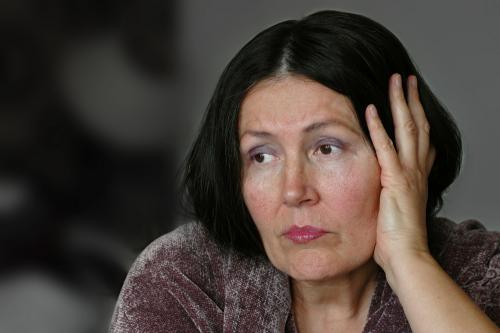How to Get Rid of Sciatica Nerve Pain?

Treatment of Sciatica Pain
Most of us find lower back pain a debilitating condition – painful, and difficult to treat. The issue is compounded when the sciatica nerve is involved. Sciatica nerve pain is normally a shooting pain, from the lumbar region of the back and down the leg. Pain travels down the nerve to below the knee and into the foot.
What is Sciatica?
Sciatica is the term used to describe the symptom; the condition, approximately ninety percent of the time, is caused by pressure in the lumbar region on the nerve roots typically from a herniated disc. The pressure of the herniation, as well as resulting inflammation, puts pressure on the sciatic nerve and sends a severe shooting pain down the nerve.
The most common cause of sciatica is a herniated disc; there are, however, other causes. If sciatica does not resolve in a relatively short time frame, these other causes must be investigated. Other causes include spinal stenosis, piriformis syndrome, pregnancy, or tumors. Sciatica from pregnancy results in the second and third trimester, when the growing infant puts pressure on the lumbar nerve roots; however, sciatica nerve pain or sciatica in a pregnant woman should not be dismissed as just pregnancy – other causes may be the root of sciatica, and the pregnancy is merely masking the true problem.
Treatments for Sciatica
The treatment protocols for sciatica range from bed rest to surgery. Very few treatments have more efficacy than bed rest or exercise; which of these you choose is based on individual factors, such a pain tolerance, and whether or not the patient can actually stay in bed for a minimum of two weeks up to several months.
Bed Rest
Bed rest is exactly what it sounds like – staying in bed as much as possible until the root cause of the sciatica – normally, a herniated disc – heals and the pressure from the extruding disc is gone. Inflammation around the herniated disc must also heal for the pain and pressure to go fully away.
Exercise and Physical Therapy
Maintaining an active lifestyle, with regular exercise, and controlling the pain with medication is also a viable option. If the patient’s pain tolerance can deal with the pain level, staying active has fewer negative effects than bed rest; normal living is not disrupted, fitness levels are not sacrificed, and muscles stay strong. Pain medication should be used judiciously; over-the-counter non-steroidal anti-inflammatories (NSAIDs) have a whole host of nasty side effects, so usage should be controlled. Prescription pain medications start with prescription strengths of the OTC NSAIDs and move into opiods. Opioids have a strong addictive quality, and should be avoided if at all possible.
Physical therapy is directed exercise, aimed at rehabilitating the body from injuries or disease. Physical therapy doesn’t have a higher effectiveness than either bed rest or staying active, so choosing it is a matter of personal preference.
Surgery
Surgery for sciatica involves the removal of the herniated disc, known as a discectomy. Short-term benefits are immediate, but long-term effects are not clear. If the sciatica is from another cause, such as tumors, surgery is indicated to remove the tumors, followed by treatment of the disease condition causing the tumors in the first place.
Alternative Therapy
Alternate therapies include supplementation, acupuncture, acupressure, hot and cold therapies, yoga, and gentle stretching exercise.
Most of the alternative therapies are as effective as bed rest and allopathic pain medications. Supplementation with natural anti-inflammatories and pain relievers gives the patient back pain relief without the nasty side effects attending the OTC NSAIDs. Turmeric is a strong natural anti-inflammatory, and it can be supplemented with capsules, or the spice can be added to the patient’s diet.
Acupuncture and acupressure are staples of Chinese medicine; they involve needles (acupuncture) or pressure (acupressure) on indicated points of the body. The stimulus unblocks nerve channels, allowing energy (chi) to flow normally, relieving the disease condition caused by the blockage. These treatments are effective on an individual-by-individual basis, as every person responds differently.
Application of cold packs alternatively with heating pads is an age-old method of reducing inflammation from physical injury. The cold brings down the inflammation, and the heat relaxes the muscular tissue involved.
Yoga and gentle stretching may be considered as physical therapy, but a licensed physical therapist is not required. Gentle stretching exercises can be done at home, by the patient, with no supervision required. The patient will know if the stretches are effective or not, without outside influence.
Yoga can also be done at home, without supervision, if the patient already knows the techniques. If not, attendance at a yoga studio is a good idea, to learn the techniques properly, before advancing to doing them at home, alone.
The therapies for sciatica are mainly common-sense treatments, capable of being performed by almost anybody, with the exception of surgery and allopathic pain medications. A doctor’s supervision is required when long-term pain medication is involved, and certainly a surgeon is involved when an operation is deemed the best treatment. If you experience sciatica, try the treatments you can do by yourself first. If they are not effective, or sciatica lasts longer than six months, see a physician, as you may fall in the ten percent of sciatica patients with another cause besides a herniated disc, or you may want surgery on the disc if you fall in the other ninety percent.
Most of the time, sciatica can be dealt with by the patient; if it can’t, physician involvement may be required. If you’re dealing with sciatica, remember – this too shall pass.
References









Comments